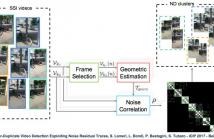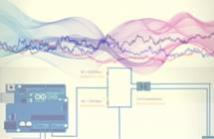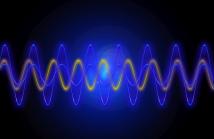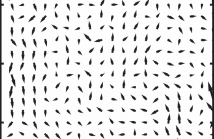
- Read more about NEAR-DUPLICATE VIDEO DETECTION EXPLOITING NOISE RESIDUAL TRACES
- Log in to post comments
Video phylogeny research about joint analysis of correlated video sequences has shown the possibility of developing interesting forensic applications. As an example, it is possible to study the provenance of near-duplicate (ND) video sequences, i.e., videos generated from the same original one through content preserving transformations. To perform this kind of analysis, accurate detection of ND videos is paramount. In this paper, we propose an algorithm for ND video detection and clustering in a challenging setup.
- Categories:
 22 Views
22 Views- Read more about SP Cup 2016 Purdue Report
- Log in to post comments
We report a multi-harmonic histogram method for extracting and analyzing electric network frequency (ENF) signals to identify power grids. Given a voltage-time measurement of a power grid with a base frequency f0, we compute the ENF signals at multiple harmonic locations f_0 and extract (i) a histogram of the magnitudes of the ENF; (ii) a histogram of the signal power and noise power surrounding the ENF; (iii) a histogram of the signal-to noise-ratio (SNR) of the ENF.
- Categories:
 64 Views
64 Views
- Read more about IITH SPCUP Project Report
- Log in to post comments
We present two contributions in this work: i)Novel electric network frequency (ENF) classification algorithm, and ii)Circuit for measuring power signals from the power grid.We first propose a novel ENF signal estimation algorithm.This algorithm explicitly makes use of the harmonic information present in the signal and estimates the nominal frequency based on the most reliable harmonic. The ENF signal is estimated from the most reliable harmonic by employing a Gaussian weighting window to mitigate the effects of noise. We
- Categories:
 258 Views
258 Views- Read more about SP Cup technical report: Team UNStoppable, Serbia
- Log in to post comments
The Electric network frequency (ENF) signal is a unique signal for different parts of the world. It is captured by electric devices, and can be used in authentication and automatic synchronization of digital media recordings. In this paper we propose an algorithm to extract ENF from power and audio recordings, and use ENF criterion to identify the region-of-recording. We also propose a design of a circuit to record the electrical power grid.
- Categories:
 28 Views
28 Views
- Read more about Discriminant Correlation Analysis for Feature Level Fusion with Application to Multimodal Biometrics
- Log in to post comments
In this paper, we present Discriminant Correlation Analysis (DCA), a feature level fusion technique that incorporates the class associations in correlation analysis of the feature sets. DCA performs an effective feature fusion by maximizing the pair-wise correlations across the two feature sets, and at the same time, eliminating the between-class correlations and restricting the correlations to be within classes.
- Categories:
 120 Views
120 Views
- Read more about AAC Encoding Detection and Bitrate Estimation using a Convolutional Neural Network
- Log in to post comments
- Categories:
 9 Views
9 Views
- Read more about Open-set Microphone Classification via Blind Channel Analysis
- Log in to post comments
- Categories:
 20 Views
20 Views- Read more about Flicker Forensics for Camcorder Piracy
- Log in to post comments
A. Hajj-Ahmad, S. Baudry, B. Chupeau, G. Do¨err, and M. Wu, “Flicker forensics for camcorder piracy,” published in IEEE Transactions on Information Forensics and Security. Available here: http://doi.org/10.1109/TIFS.2016.2603603
- Categories:
 20 Views
20 Views
- Read more about "Seeing the Invisibles: A Backstage Tour of Information Forensics" - Slides from IEEE Distinguished Lectures
- Log in to post comments
IEEE Distinguished Lecture on
"Seeing the Invisibles: A Backstage Tour of Information Forensics"
(Given at the School of ICASSP 2015 in April 2015 and IEEE Signal Processing Chapters in Fall 2015)
by Prof. Min Wu
University of Maryland, College Park, USA
- Categories:
 50 Views
50 Views
This work studies the paper authentication problem by exploiting optical features through mobile imaging devices to characterize the unique, physically unclonable properties of paper surface. Prior work showing high matching accuracy either used a consumer-level scanner for estimating a projected normal vector field of the surface of the paper as the feature for authentication, or used an industrial camera with controlled lighting to obtain an appearance image of the surface as the feature.
- Categories:
 75 Views
75 Views